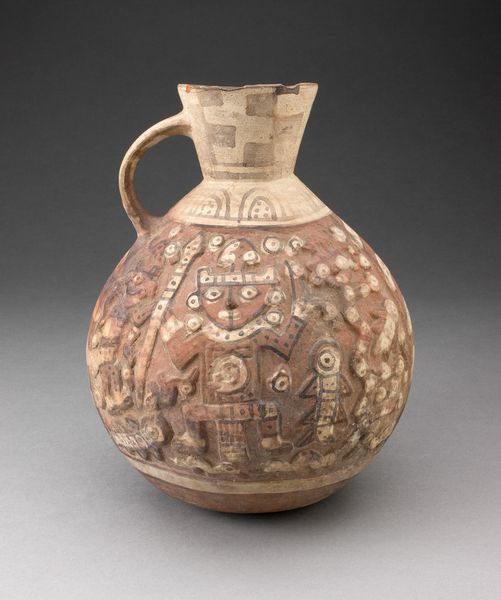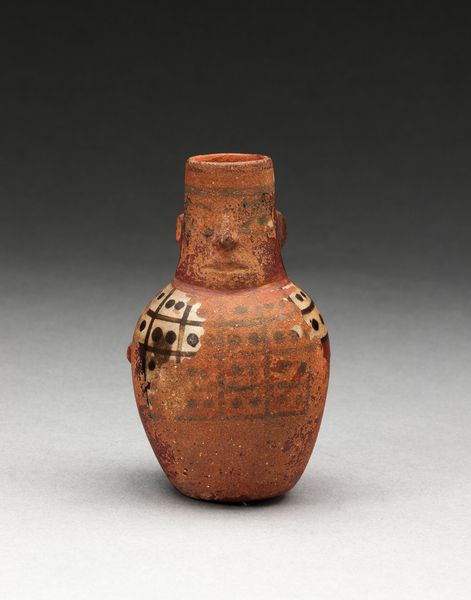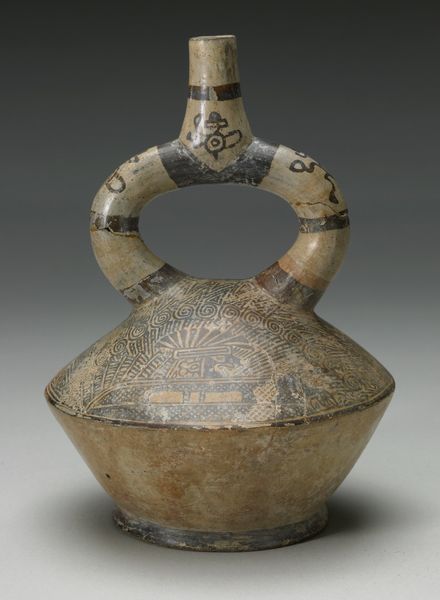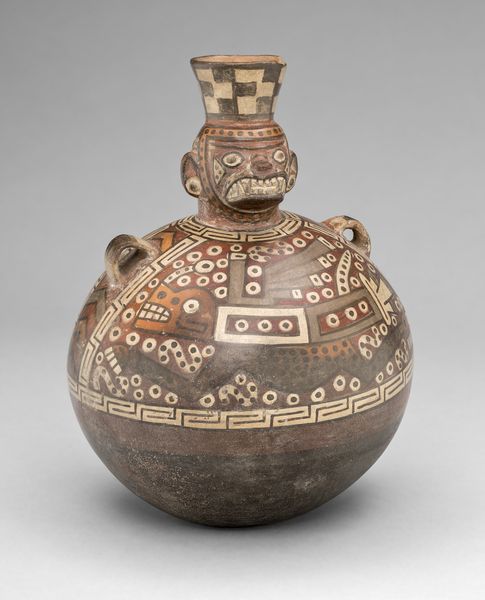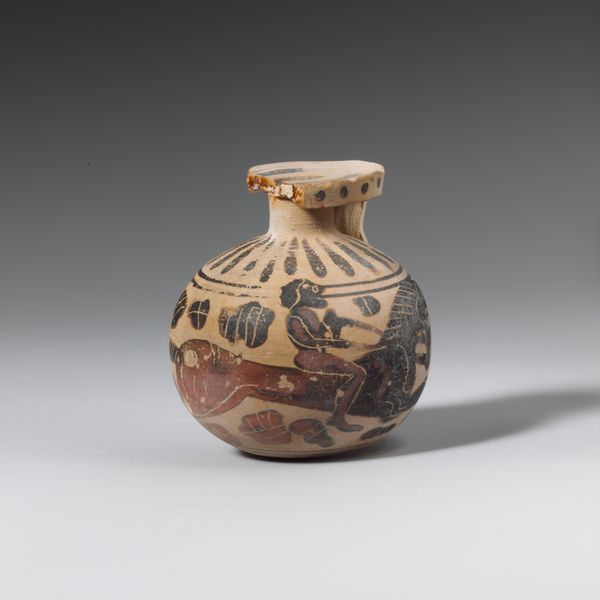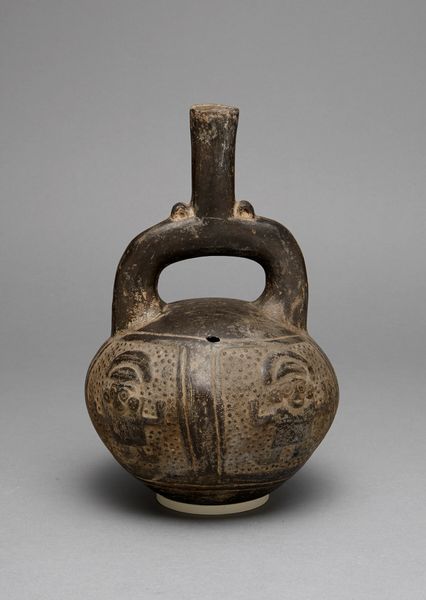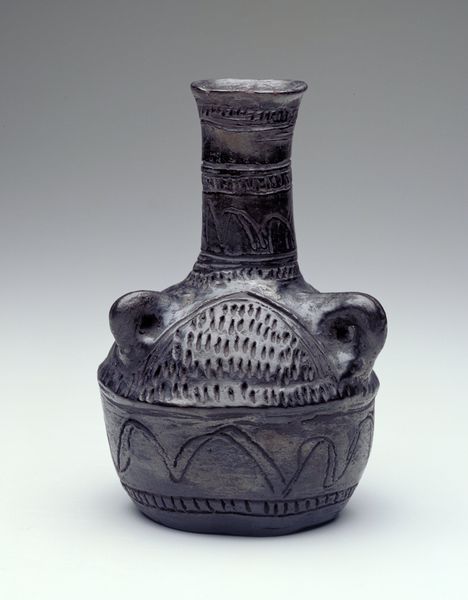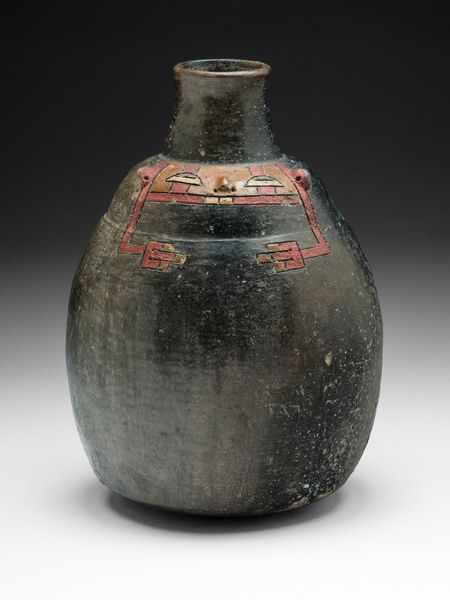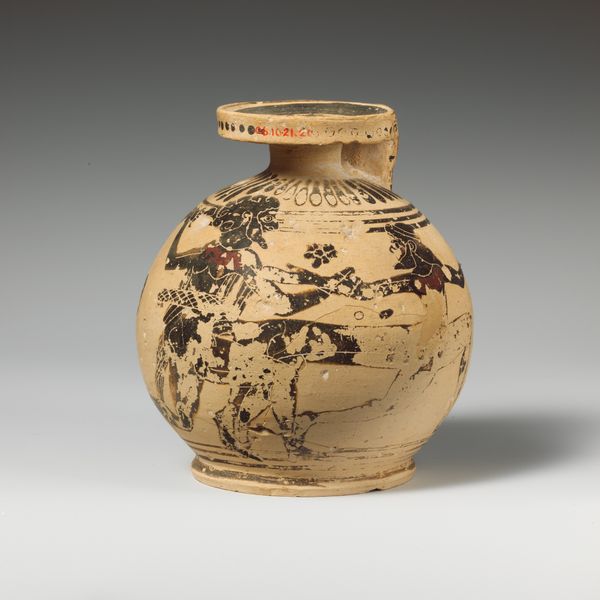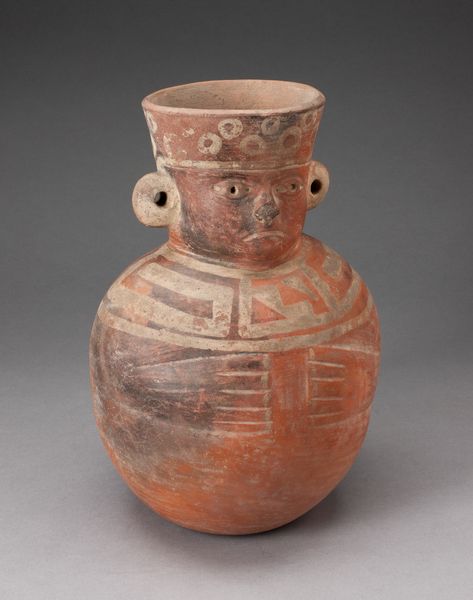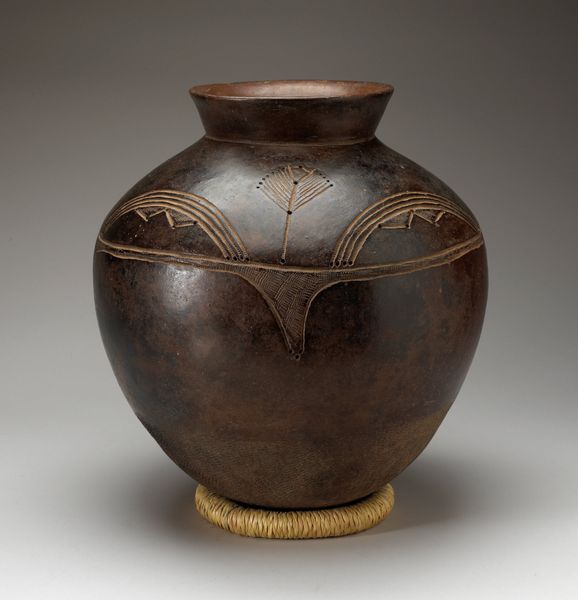
Jar with Relief of Standing Figure with Crescent Headdress, Holding Ritual Objects Possibly 1200 - 1450
0:00
0:00
relief, ceramic, sculpture
#
relief
#
ceramic
#
figuration
#
stoneware
#
sculpture
#
ceramic
#
indigenous-americas
Dimensions: 26 × 22.2 cm (10 1/2 × 8 3/4 in.)
Copyright: Public Domain
Editor: Here we have an example of Chimú pottery, a “Jar with Relief of Standing Figure with Crescent Headdress, Holding Ritual Objects,” likely created sometime between 1200 and 1450. Its monochromatic palette is striking. It gives the object a solemn, weighty feel. Curator: Indeed. The interplay between the raised relief and the dark, burnished ceramic is meticulously executed. Notice the geometric designs along the vessel's neck, contrasted against the more figurative imagery on the body. It's an intriguing dance of form and surface. Editor: This vessel likely served a specific social purpose. Pottery production in the Chimú culture was highly specialized; artifacts like these would have been used for elite feasting, ceremonies, or even funerary practices. It reflects the socio-political dynamics of the time. Curator: Semiotically, consider the central figure. The crescent headdress, the ritual objects they hold – perhaps a scepter or ceremonial knife – each detail signifies power and status within their hierarchical society. It communicates very clearly the visual language they used to construct authority. Editor: And let's not overlook the means of production! The clay itself, the labor involved in shaping, firing, and burnishing the piece. These ceramics testify to the mastery of materials and the complex divisions of labor within the Chimú workshops. This vessel embodies countless hours of specialized skill. Curator: Absolutely. The texture created on the background, almost stippled, amplifies the dimensionality and draws attention to the meticulously carved relief figure. Each groove and contour catches light in a distinct way, animating the character within the composition. Editor: Considering the grand scale of the Chimú empire, which was built on resource extraction and agricultural surpluses, we can even think about this jar as a reflection of this material wealth. It’s luxury transformed into ritual and art. Curator: The way the artist skillfully blended geometric abstraction with representational form is masterful. It encourages an interpretation beyond its functional role, pointing toward symbolic and aesthetic ambitions. Editor: For me, knowing something about where this jar comes from connects me to the material realities and skills necessary to its production. Curator: Yes, by closely examining these shapes, motifs, and textures, one gains insight into the nuanced visual vocabulary of a people and time so vastly different from our own.
Comments
No comments
Be the first to comment and join the conversation on the ultimate creative platform.
